
Fortifications at Yorktown, Virginia, during the Peninsula Campaign of 1862.

September 1862



A captured Confederate encampment near Petersburg, Virginia, in June of 1864.

A view of Washington, District of Columbia, from the intersection of 3rd and Indiana Avenue, ca. 1863. In the foreground is Trinity Episcopal Church, in the background, the unfinished Capitol building. Construction on the capitol was briefly suspended early in the war, but continued through the later years.
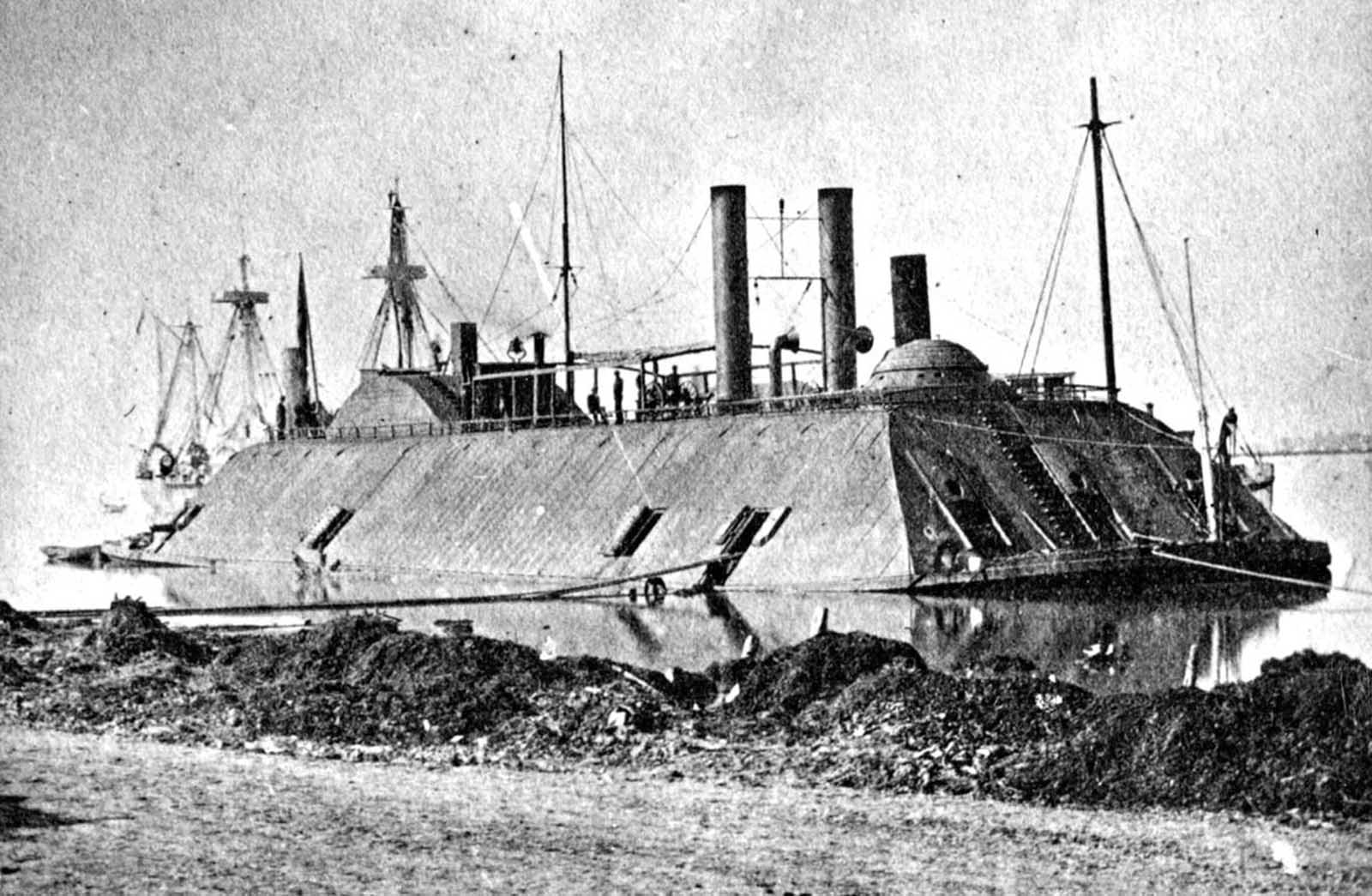
A March, 1863 photo of the USS Essex. The 1000-ton ironclad river gunboat, originally a steam-powered ferry, was acquired during the American Civil War by the US Army in 1861 for the Western Gunboat Flotilla. She was transferred to the US Navy in 1862 and participated in several operations on the Mississippi River, including the capture of Baton Rouge and Port Hudson in 1863.
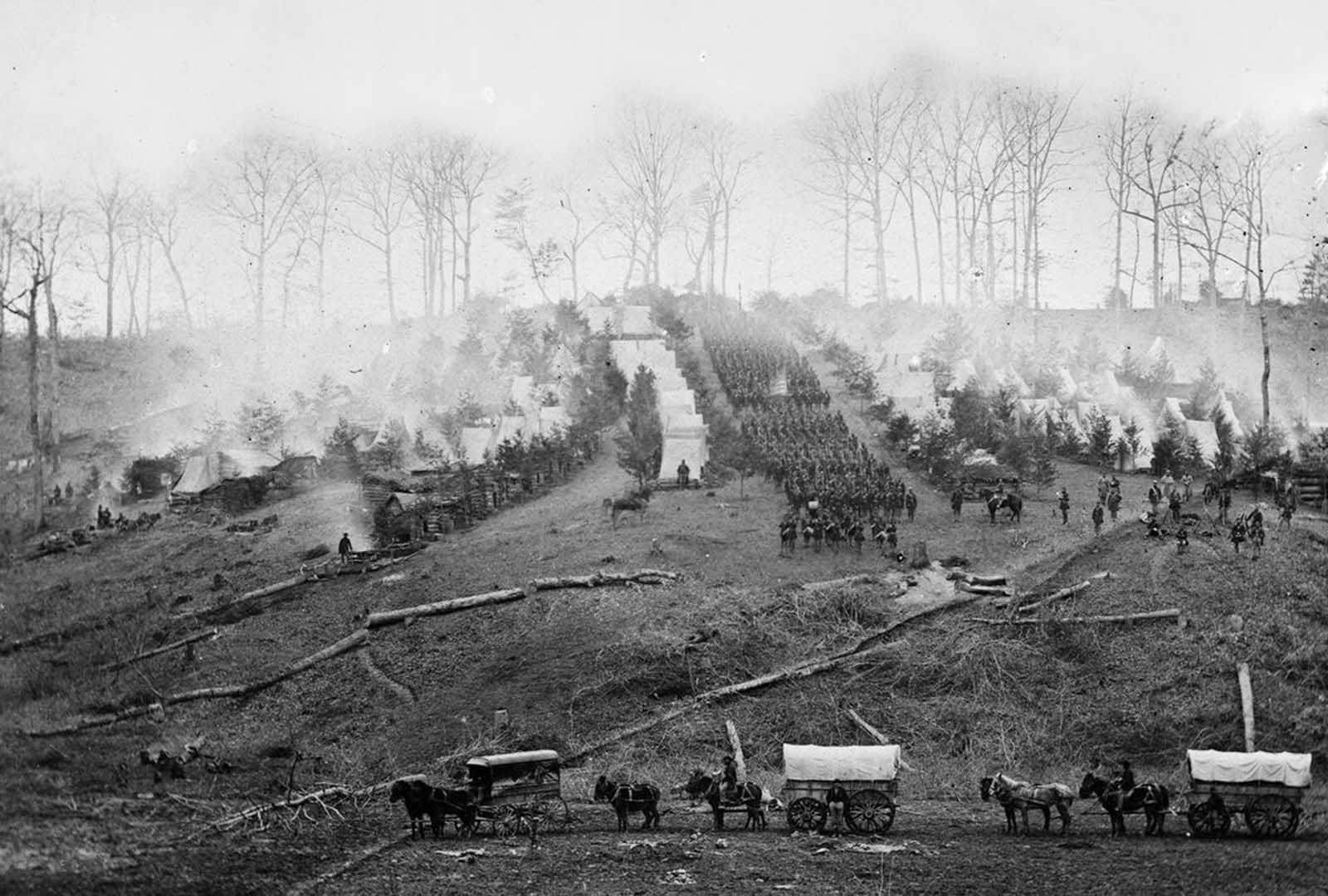
The 150th Pennsylvania Infantry camp on Belle Plain, Virginia, is pictured in March 1862, three weeks before the Battle of Chancellorsville.
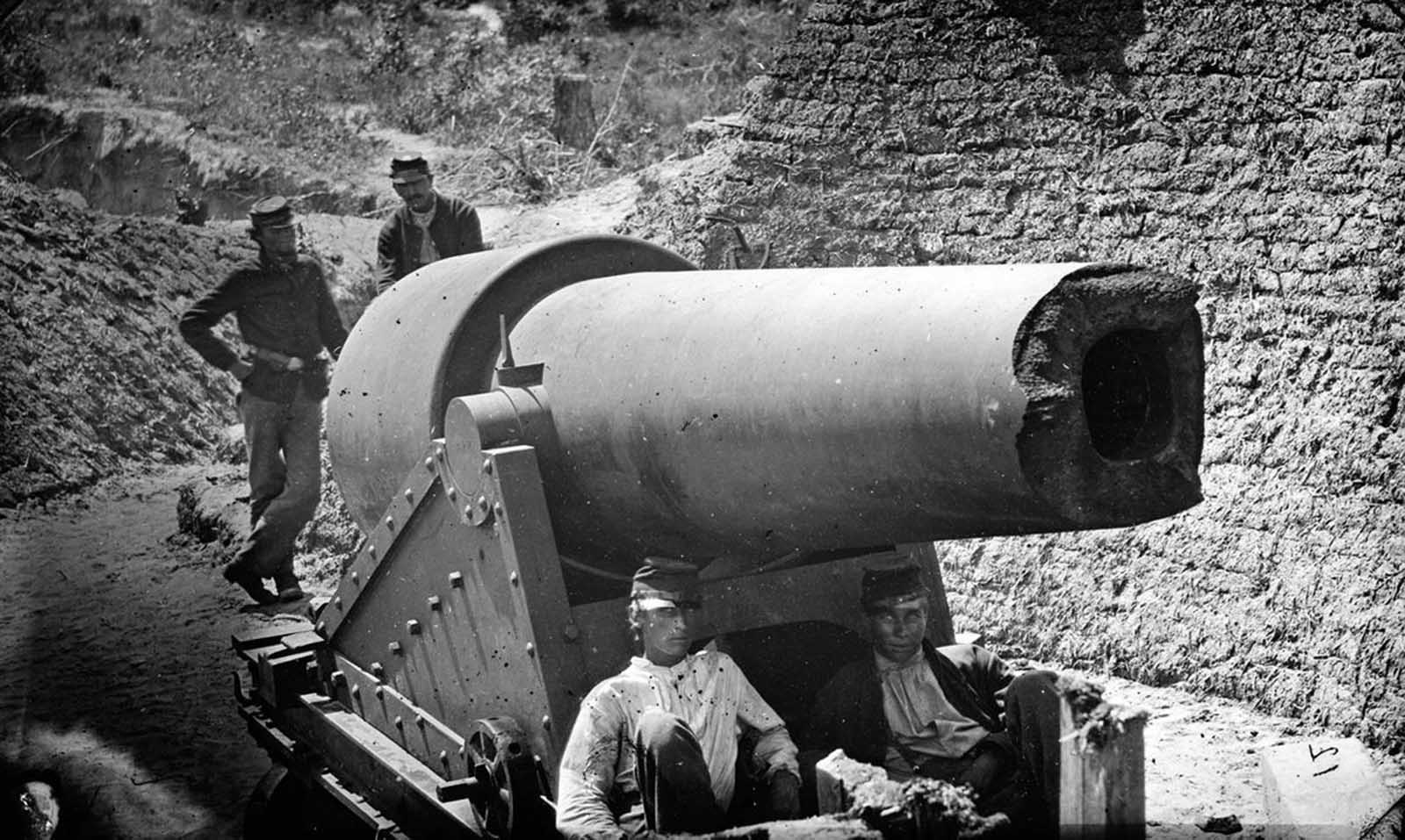
Morris Island, South Carolina. The shattered muzzle of a 300-pounder Parrott Rifle after it had burst, photographed in July or August of 1863.
Stacked cannon balls, possibly a view of an arsenal yard in Washington, District of Columbia.

Wounded soldiers at rest near Marye’s Heights, Fredericksburg, Virginia. After the battle of Spotsylvania, in 1864.
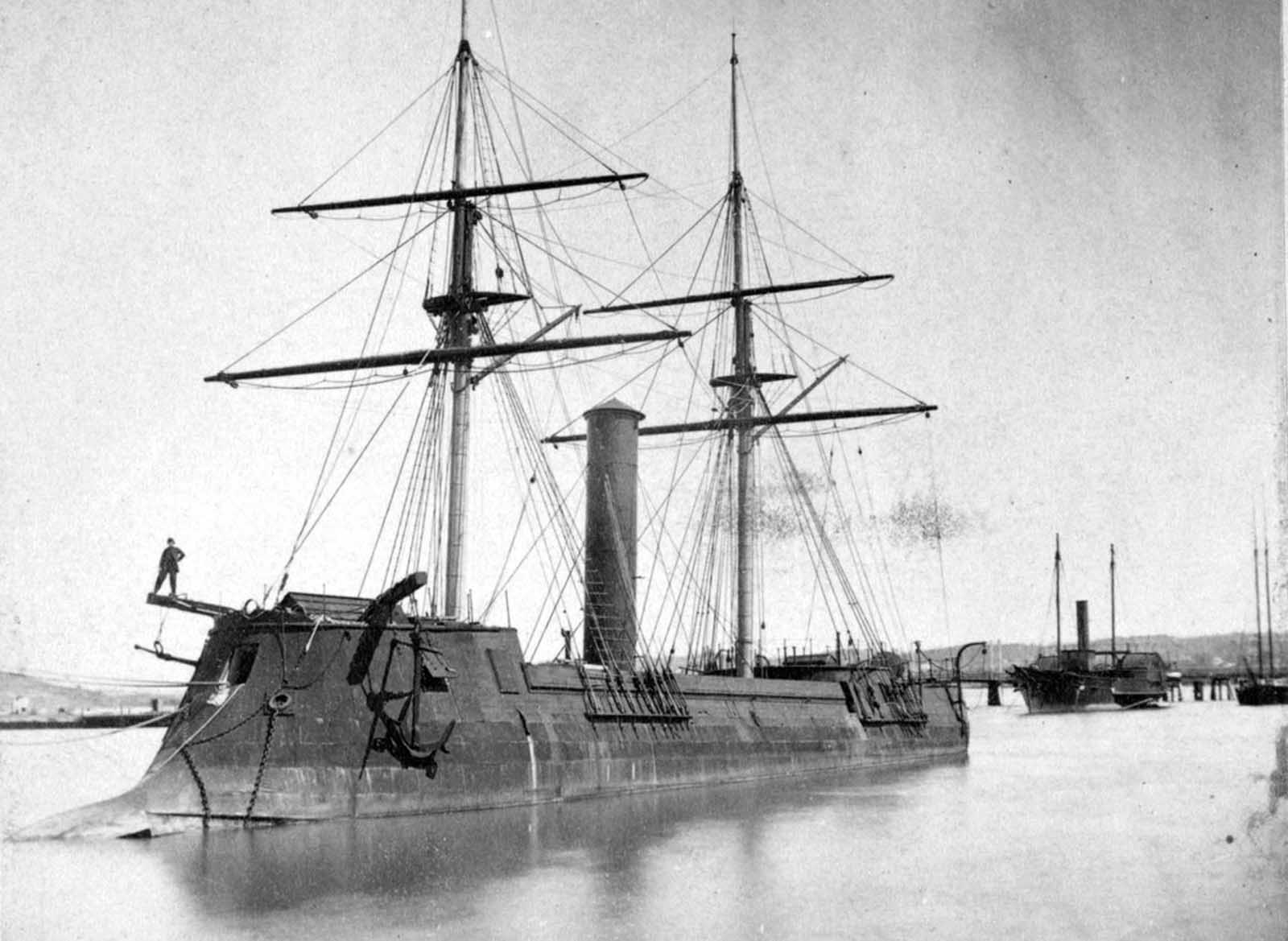
The CSS Stonewall was a 1,390-ton ironclad built in Bordeaux, France, for the Confederate Navy in 1864. After she crossed the Atlantic, reaching Havana, Cuba, it was already May, 1865, and the war had ended. Spanish Authorities took possession, soon handing it over to the U.S. government.

Union prisoners draw their rations in this view from main gate of Andersonville Prison, Georgia, on August 17, 1864.

Dead horses surround the damaged Trostle House, results of the Battle of Gettysburg, in July of 1863. Union general Major General Daniel Sickles used the farmhouse as a headquarters and Union and Confederate troops fought among the farm buildings during the fierce battle.

An execution in Washington, District of Columbia, on November 10, 1865. Henry Wirz, former commander of the Confederate prisoner of war camp near Andersonville, Georgia, was tried and hung after the war for conspiracy and murder related to his command of the notorious camp.
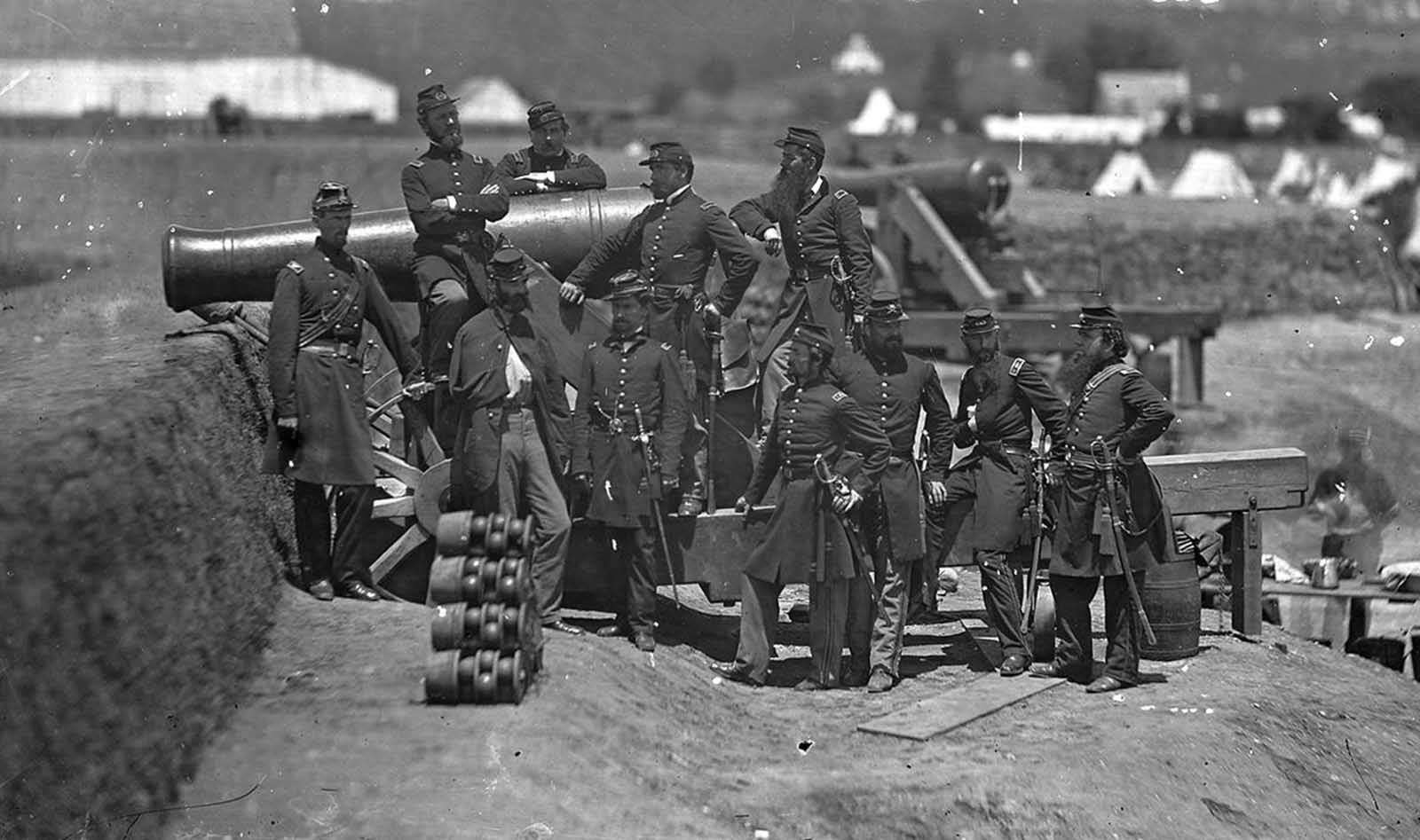
Officers of the 69th Infantry New York, at Fort Corcoran, Virginia, with Col. Michael Corcoran.

A Federal encampment on the Pamunkey River, Cumberland Landing, Virginia, in May of 1862.

Union forces of Benson’s Battery in the Battle of Seven Pines stand guard in the fighting against Gen. Thomas “Stonewall” Jackson’s Confederate troops at Fair Oaks, near Richmond, Virginia. The battle, also called Fair Oaks, took place on May 31 and June 1, 1862.
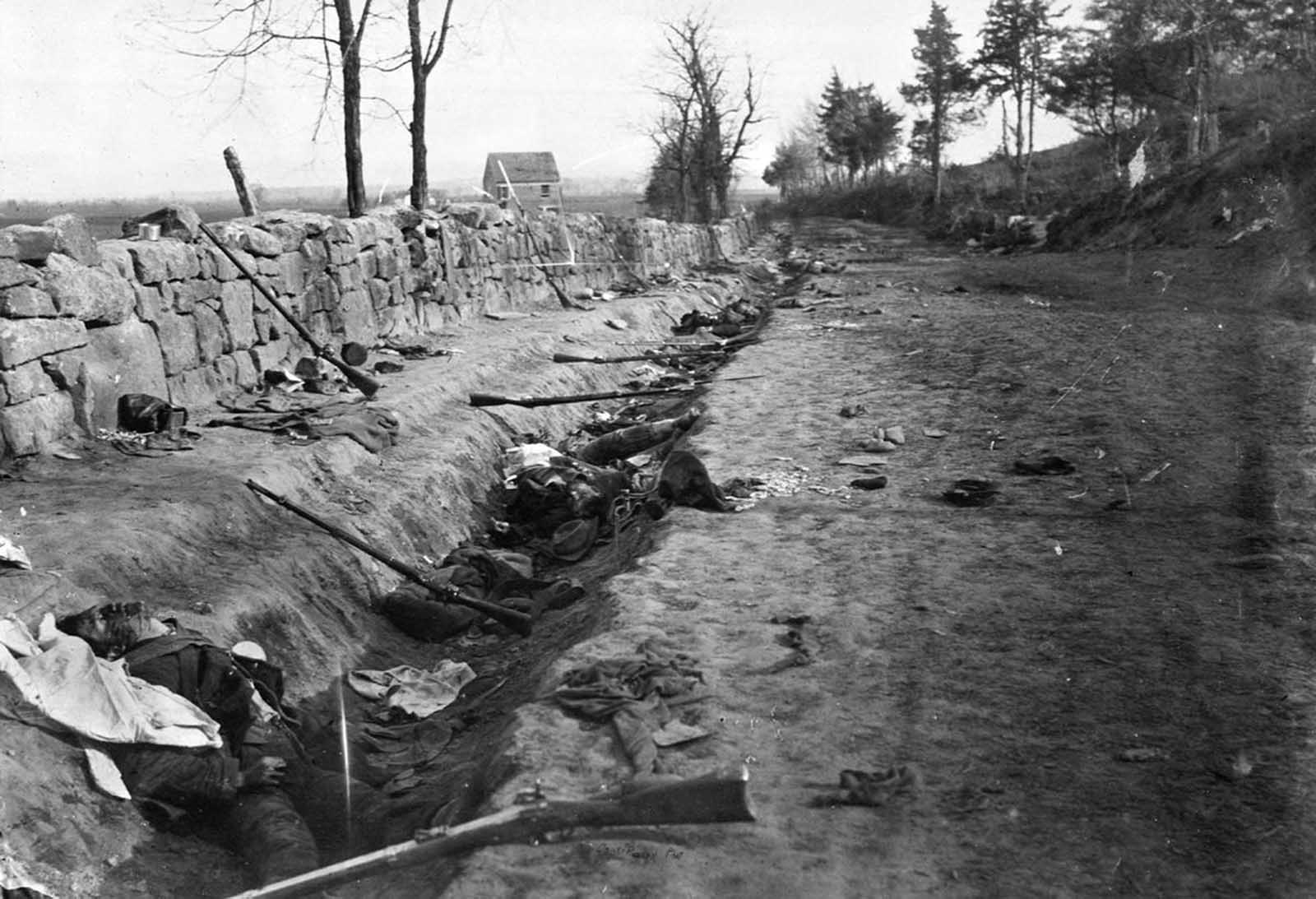
Confederate dead lie among rifles and other gear, behind a stone wall at the foot of Marye’s Heights near Fredericksburg, Virginia on May 3, 1863. Union forces penetrated the Confederate lines at this point, during the Second Battle of Fredericksburg.

13-inch seacoast mortars of Federal Battery No. 4 with officers of 1st Connecticut Heavy Artillery, near Yorktown, Virginia in May of 1862.
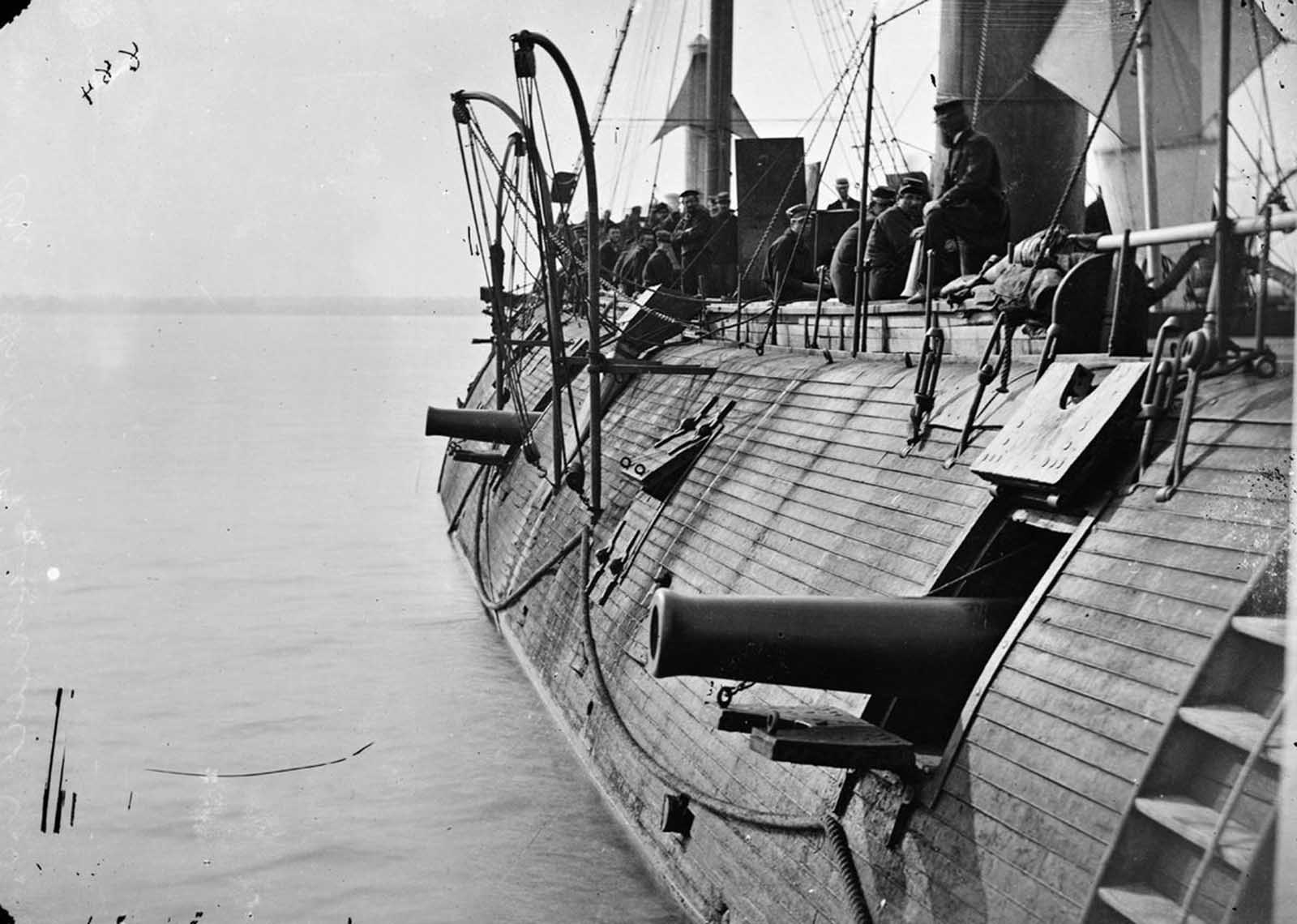
The Federal Ironclad Galena, after recent action with Confederate batteries at Drewry’s Bluff, on Virginia’s James River, ca. 1862.

African Americans collect the remains of soldiers killed in battle near Cold Harbor, Virginia, in April of 1865.
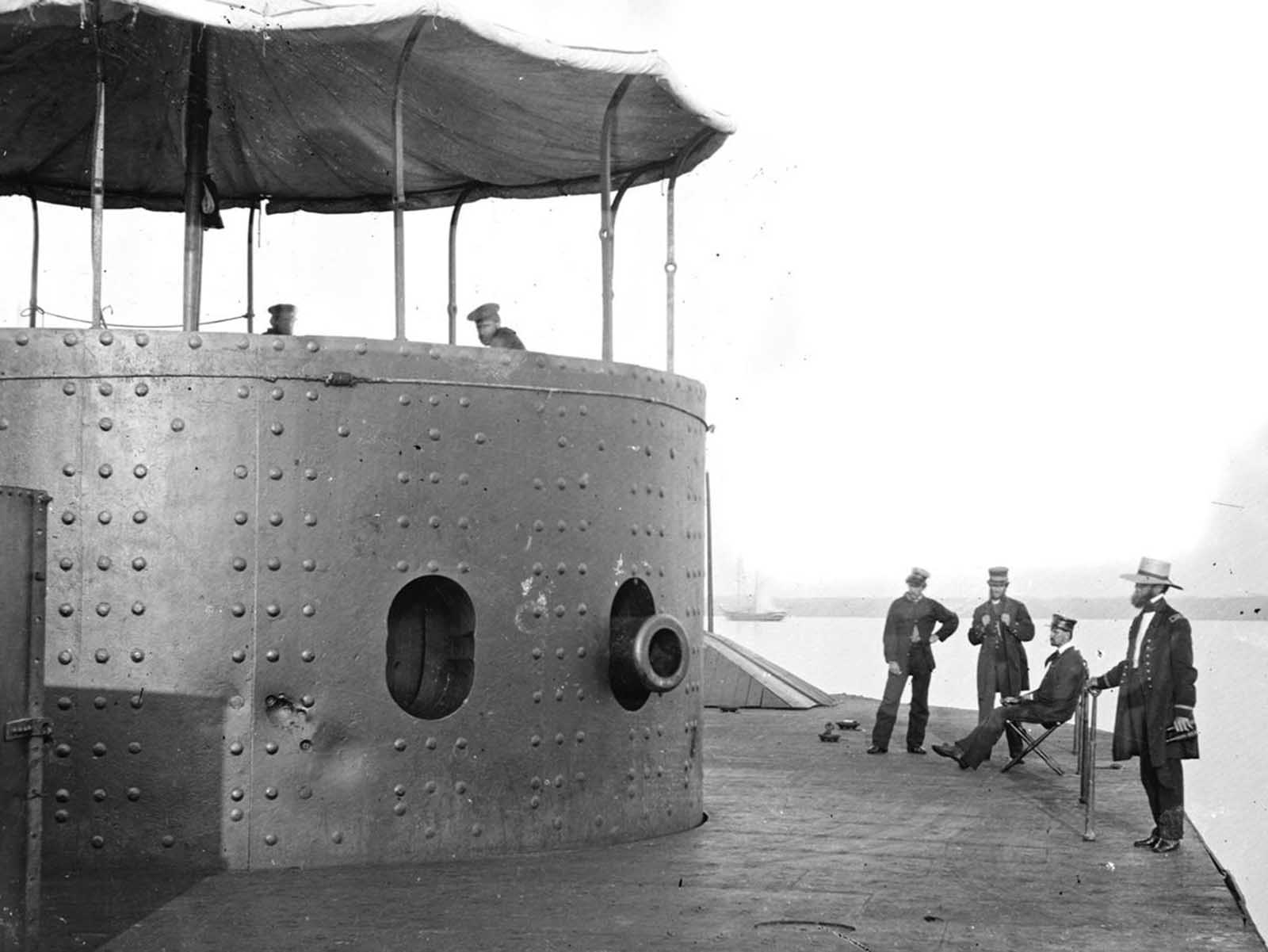
The deck and turret of the ironclad U.S.S. Monitor on the James River, Virginia, on July 9, 1862. the Monitor was the first ironclad warship commissioned by the U.S. Navy, and famously fought the Confederate ironclad CSS Virginia (built from the remnants of the USS Merrimack) in the Battle of Hampton Roads — the first meeting in combat of ironclad warships — on March 8-9, 1862. feldgrau.info
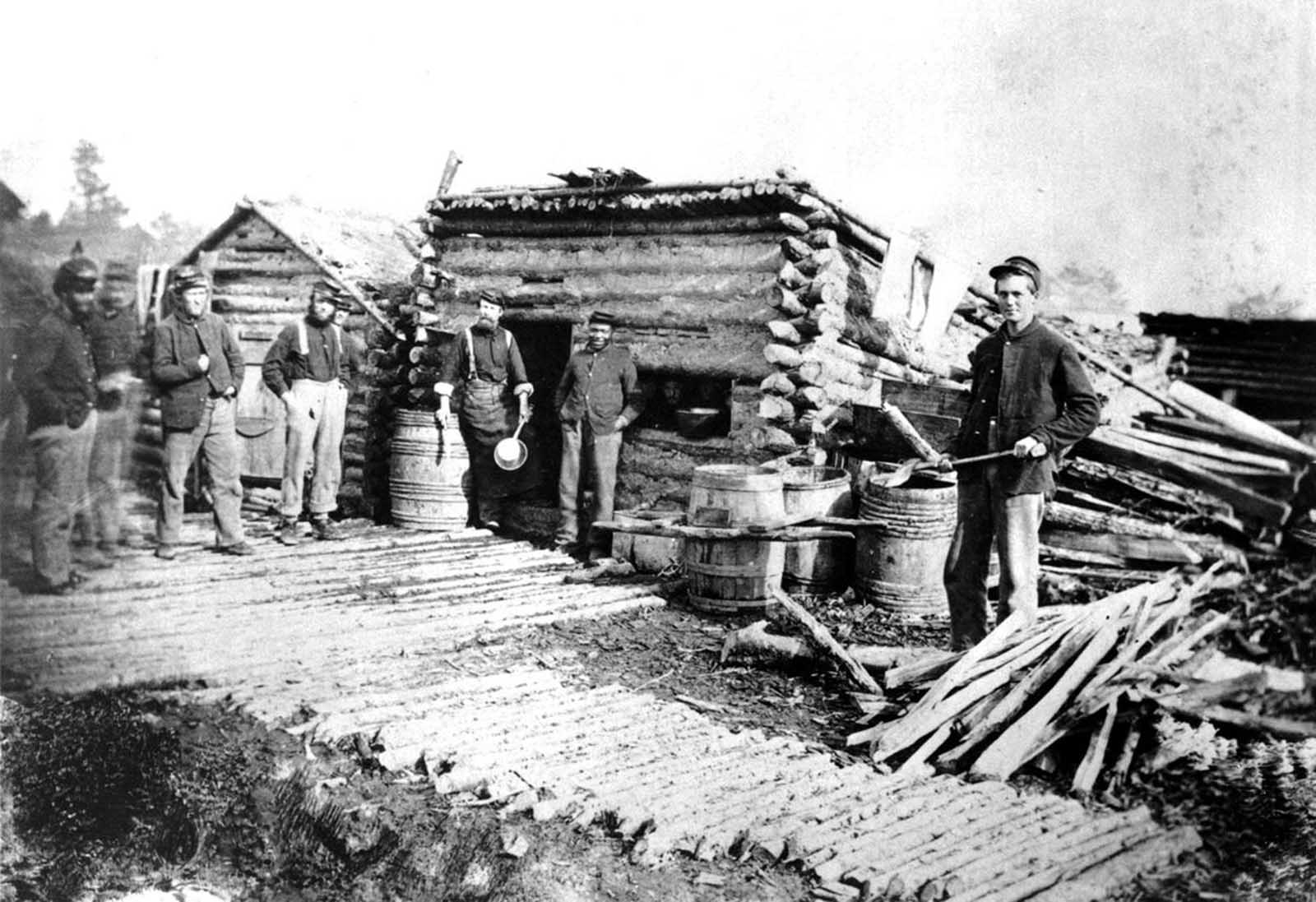
Serving as a soldier in uniform and getting regular army pay, a former slave (center, with hands in pockets) stands with other Federal soldiers at the Army of the Potomac winter headquarters near Fredericksburg, Virginia, The log hut served as a mess house for the regiment.

“Council of War”. General Ulysses S. Grant (2nd from left on bench at center left), Gen. George G. Meade, Assistant Secretary of War Charles A. Dana, and numerous staff officers meet at Massaponax Church, in Virginia on May 21, 1864.
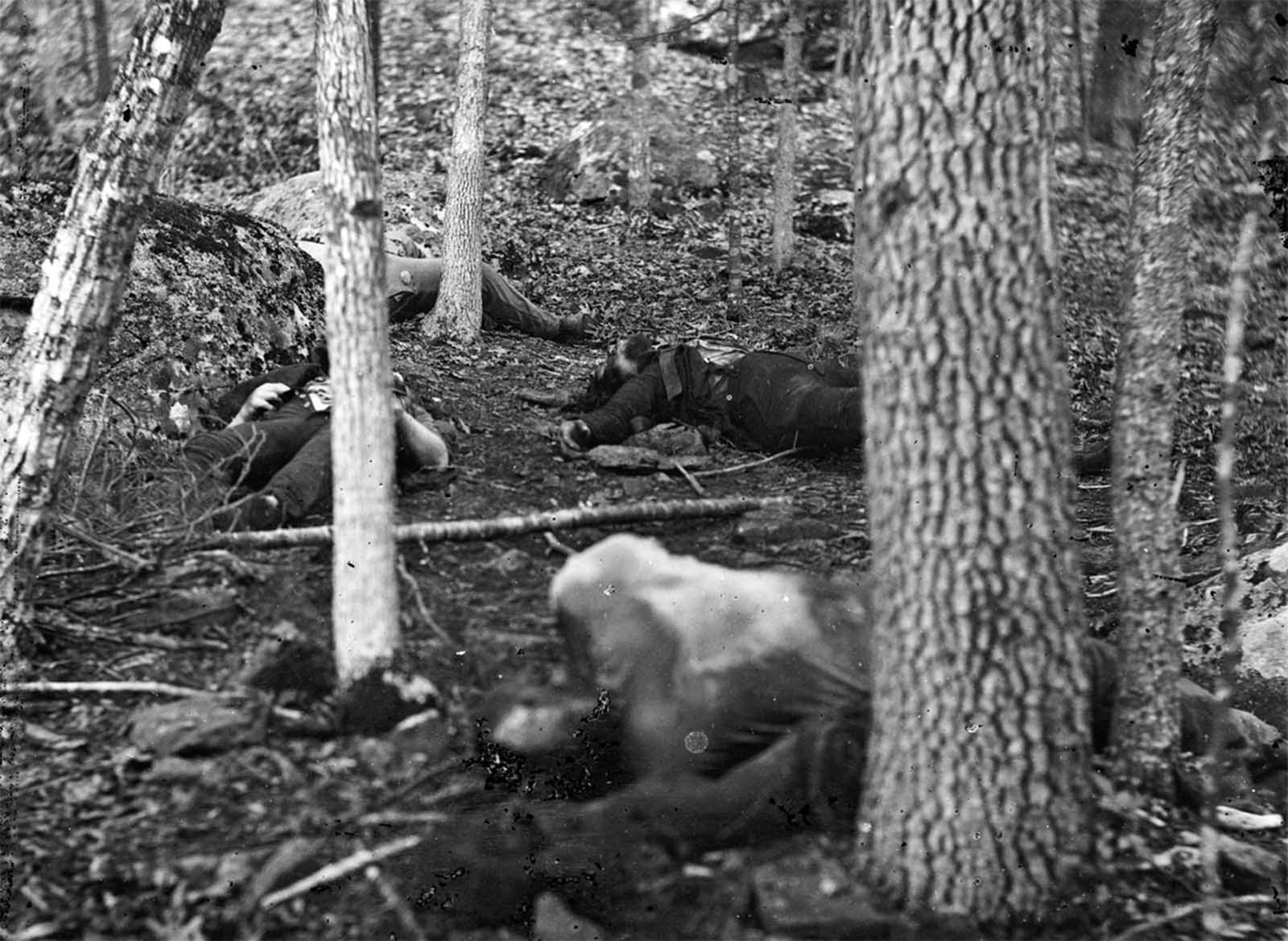
The “Slaughter pen” at foot of Round Top, after the Battle of Gettysburg, in Pennsylvania in July of 1863.
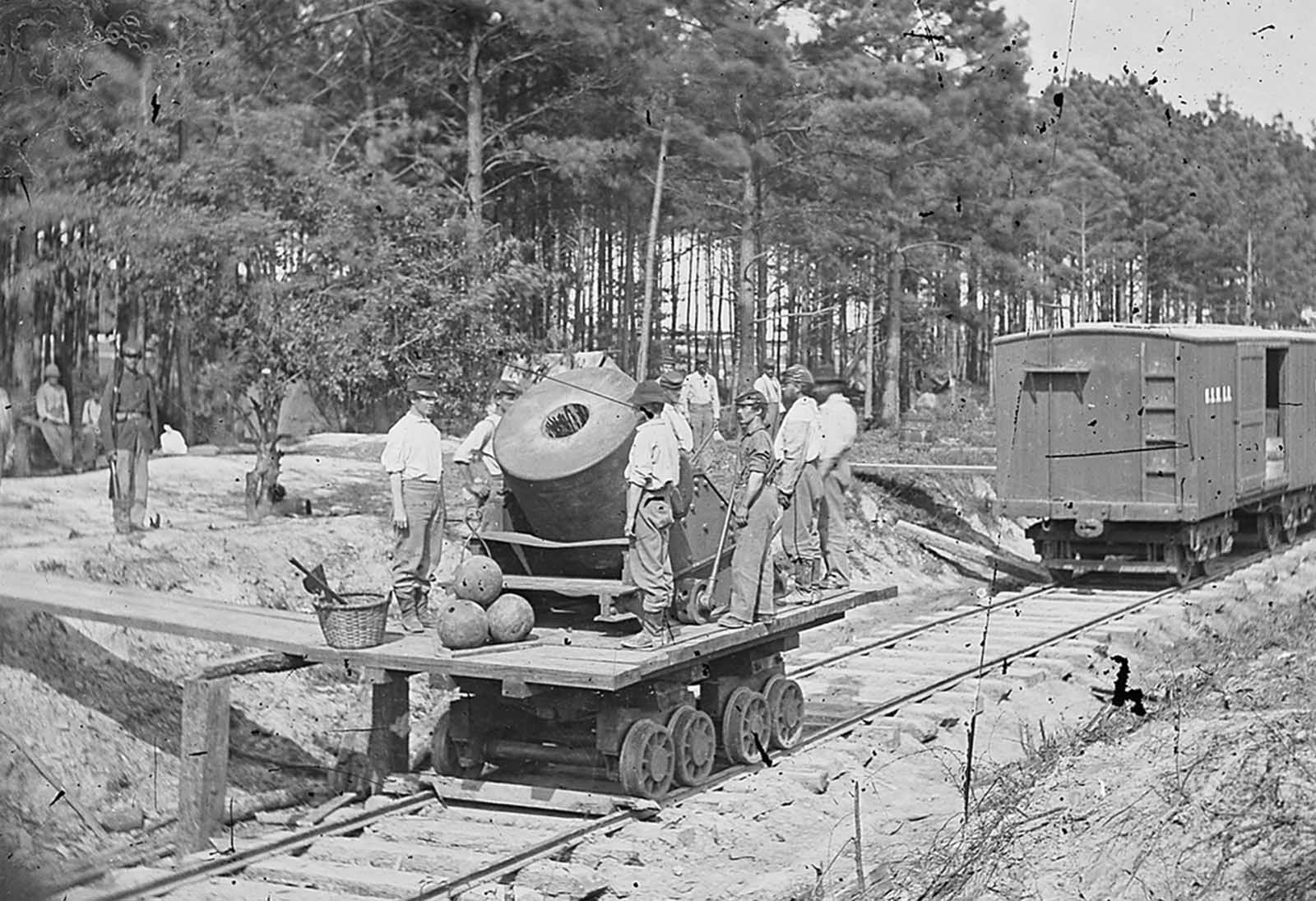
A mortar mounted on a railrioad car, near Petersburg, Virginia.
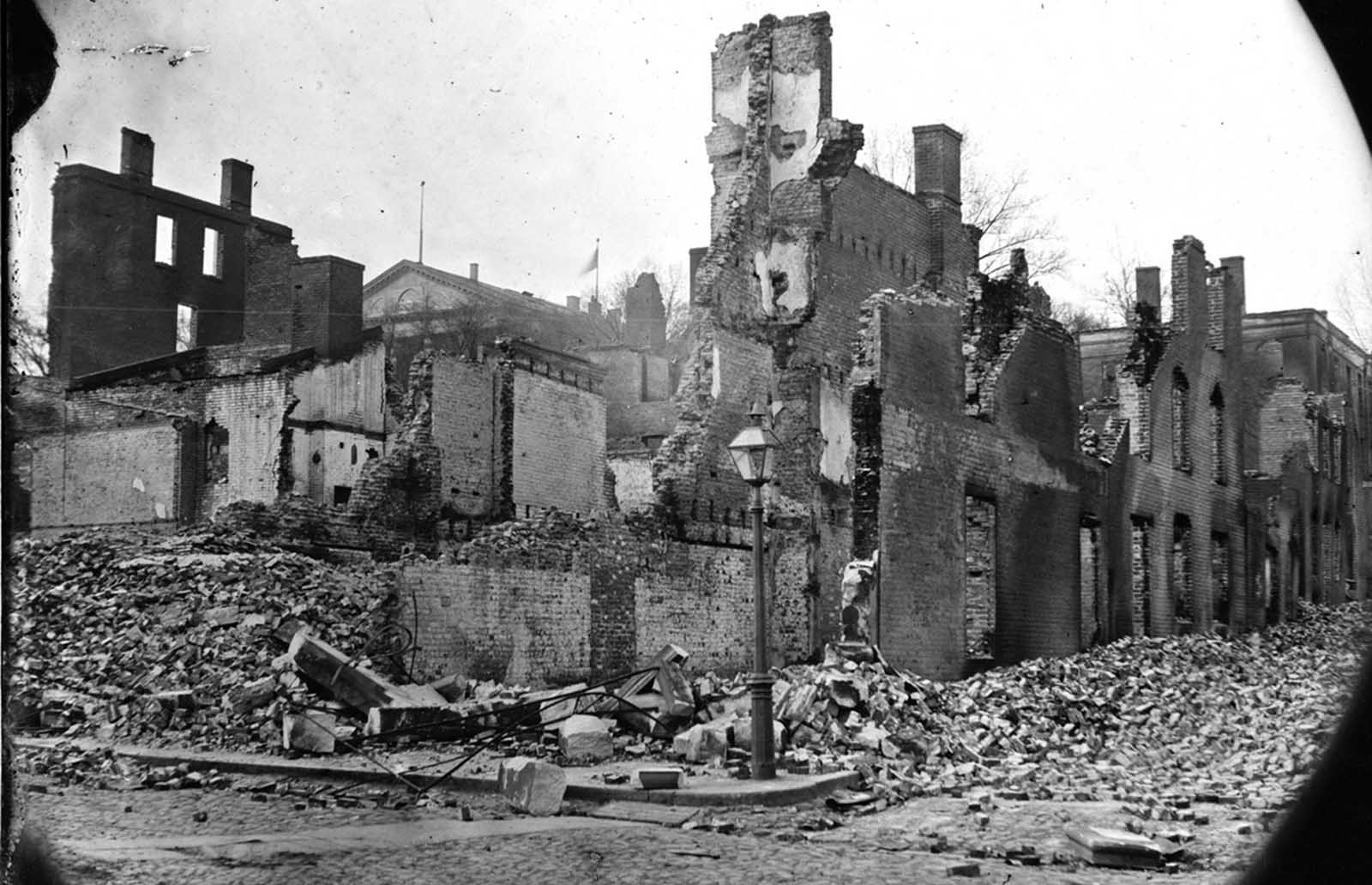
Details from the “Burnt district” of Richmond, Virginia, photographed in April of 1865.

Bodies of soldiers lie on the ground in front of Dunker Church, after the Battle of Antietam, in Maryland, in September of 1862.
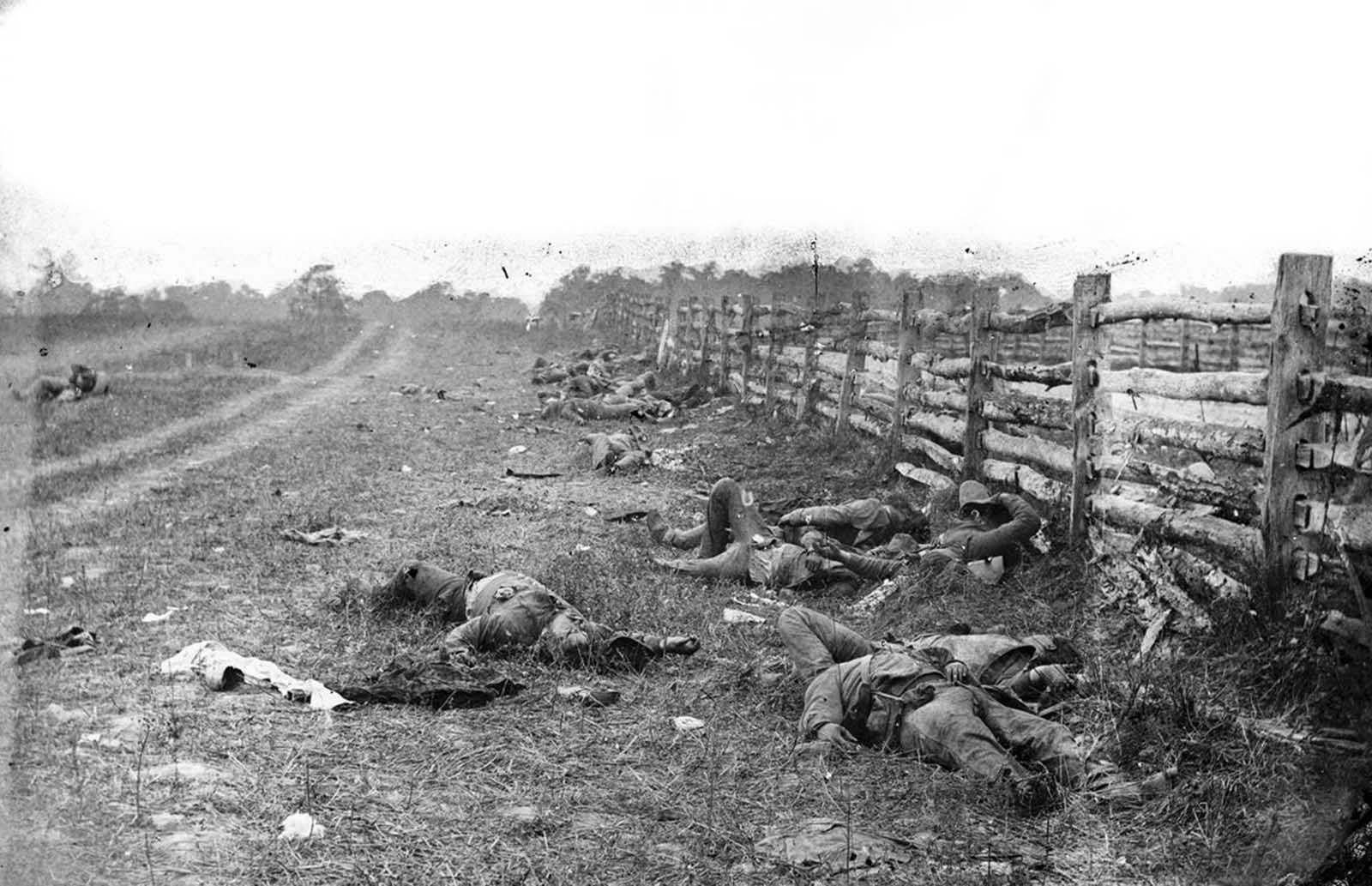
Confederate dead lie strewn near a fence on the Hagerstown road, after the Battle of Antietam, in Maryland, in September of 1862.
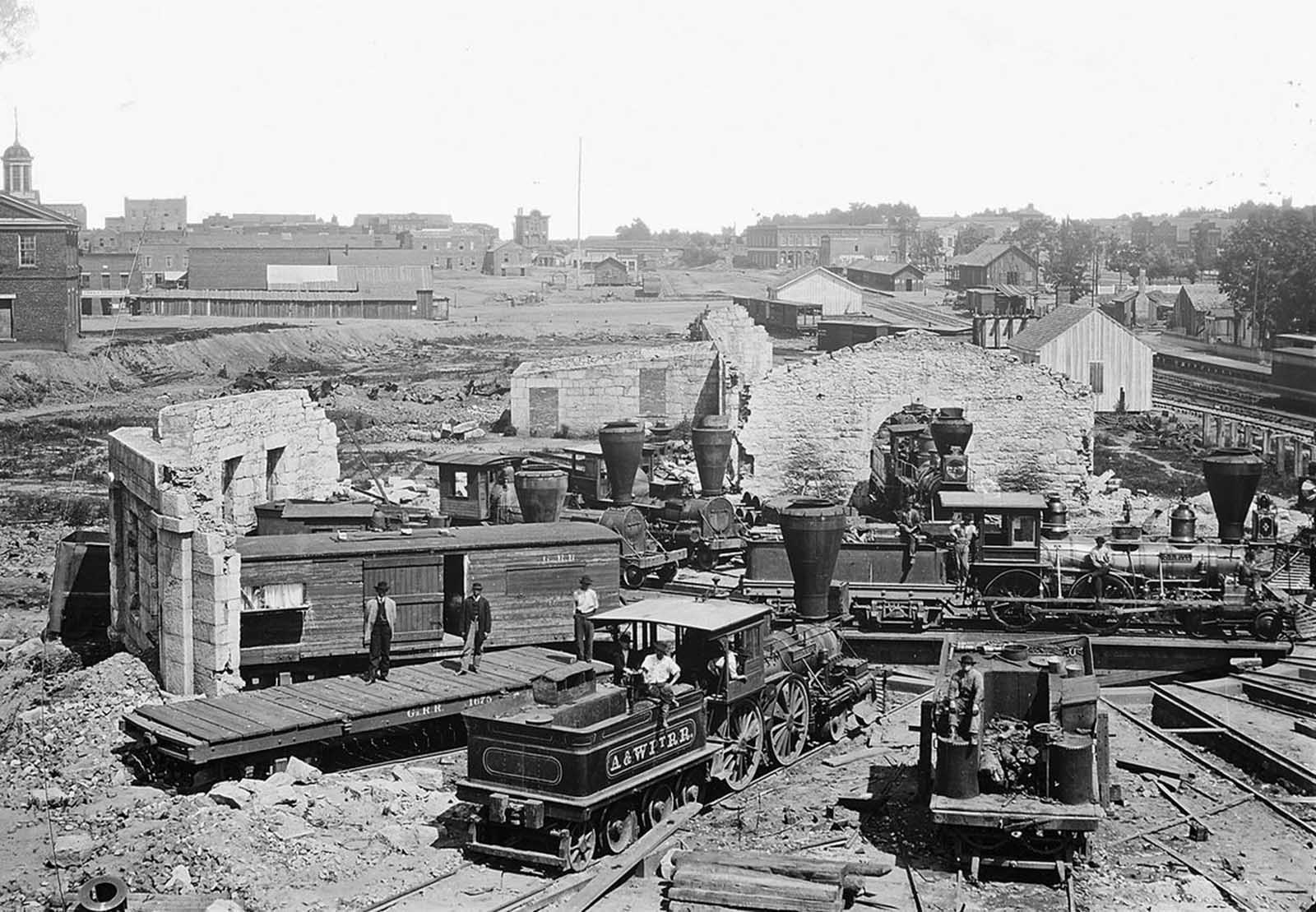
The ruins of an extensively damaged Roundhouse in Atlanta, Georgia after the Atlanta Campaign in the summer of 1864. After Union Maj. Gen. William T. Sherman captured the city, he began his destructive March to the Sea, finally taking the port of Savannah on December 21.

Grounds of the destroyed Arsenal with scattered shot and shell in Richmond, Virginia, in 1865.

Residents walk through the ruins of Richmond, Virginia, in April of 1865. Richmond served as the capital of the Confederate States of America during the majority of the Civil War. After a long siege in 1865, with General Ulysses S. Grant’s Union troops about to take the city, Confederate troops were ordered to evacuate, destroying bridges and burning supplies they could not carry. A massive fire swept through Richmond, destroying large parts of the city. About one week after the evacuation of Richmond, Gen. Robert E. Lee surrendered to Grant in near Appomattox, Virginia, on April 9, 1865. feldgrau.info
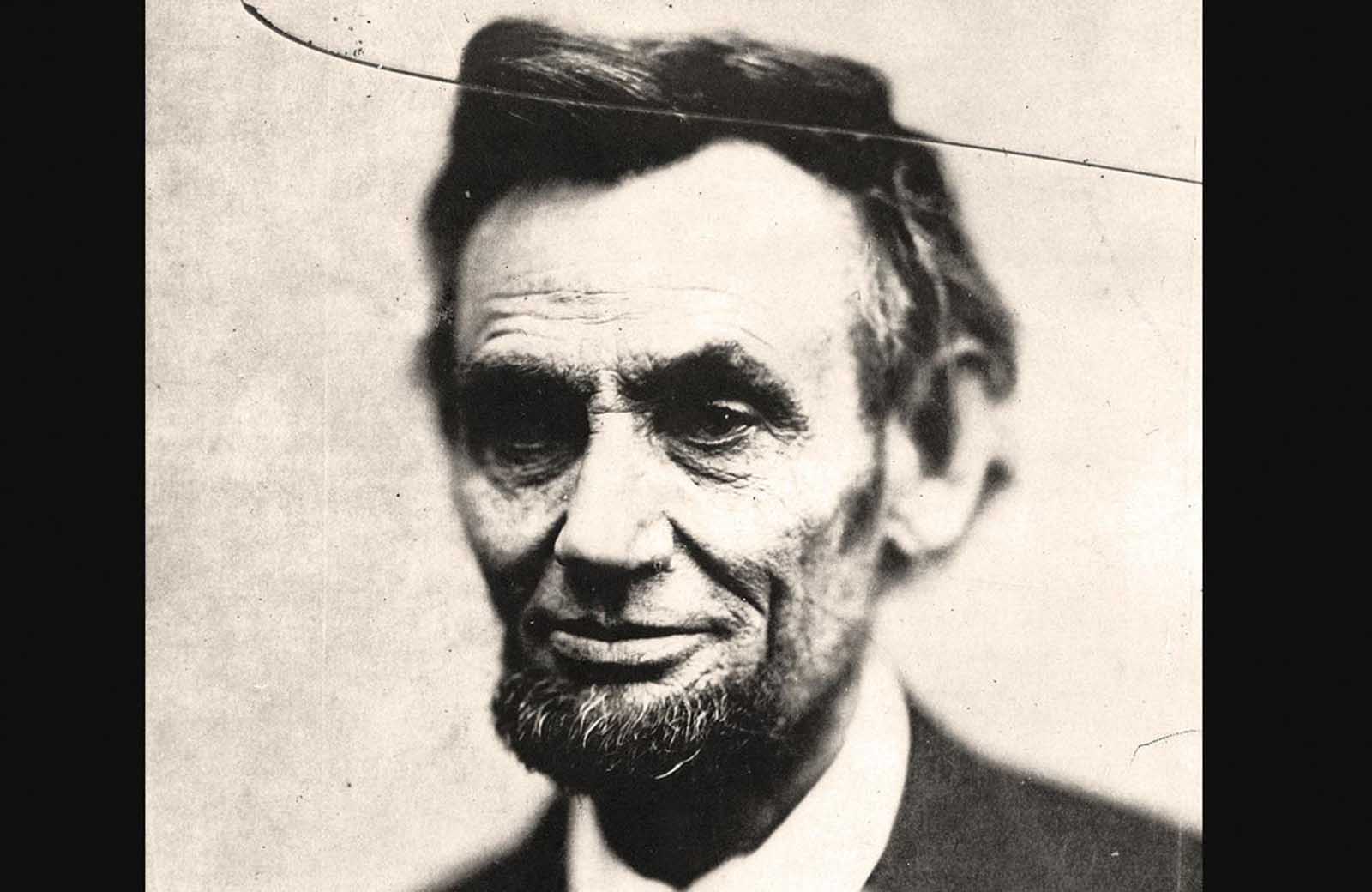
Abraham Lincoln, the 16th President of the United States, in a head-and-shoulders portrait taken by photographer Alexander Gardner on February 5, 1865.

A group men from Company B, U.S. Engineer Battalion, near Petersburg, Virginia in August of 1864.

The routines of camp life of the 31st Penn. Infantry (later, 82d Penn. Infantry) at Queen’s farm, vicinity of Fort Slocum, Washington, District of Columbia, during the Civil War in 1861.

Rose O’Neal Greenhow, “Wild Rose”, poses with her daughter inside the old Capitol Prison in Washington, District of Columbia, Greenhow, a Confederate spy, used her social ties in the Washington area to help her pass information to the South. She was apprehended by Allan Pinkerton in 1861, and held for nearly a year. She was released, deported to Richmond, Virginia, and welcomed heartily by southerners. She served as a diplomat for the Confederacy, traveling to Europe, and profiting from a popular memoir she wrote in London in 1863. In October of 1864, she was sailing home aboard a blockade runner, pursued by a Union ship near North Carolina. Her ship ran aground, and Greenhow drowned during an escape attempt, after her rowboat capsized.
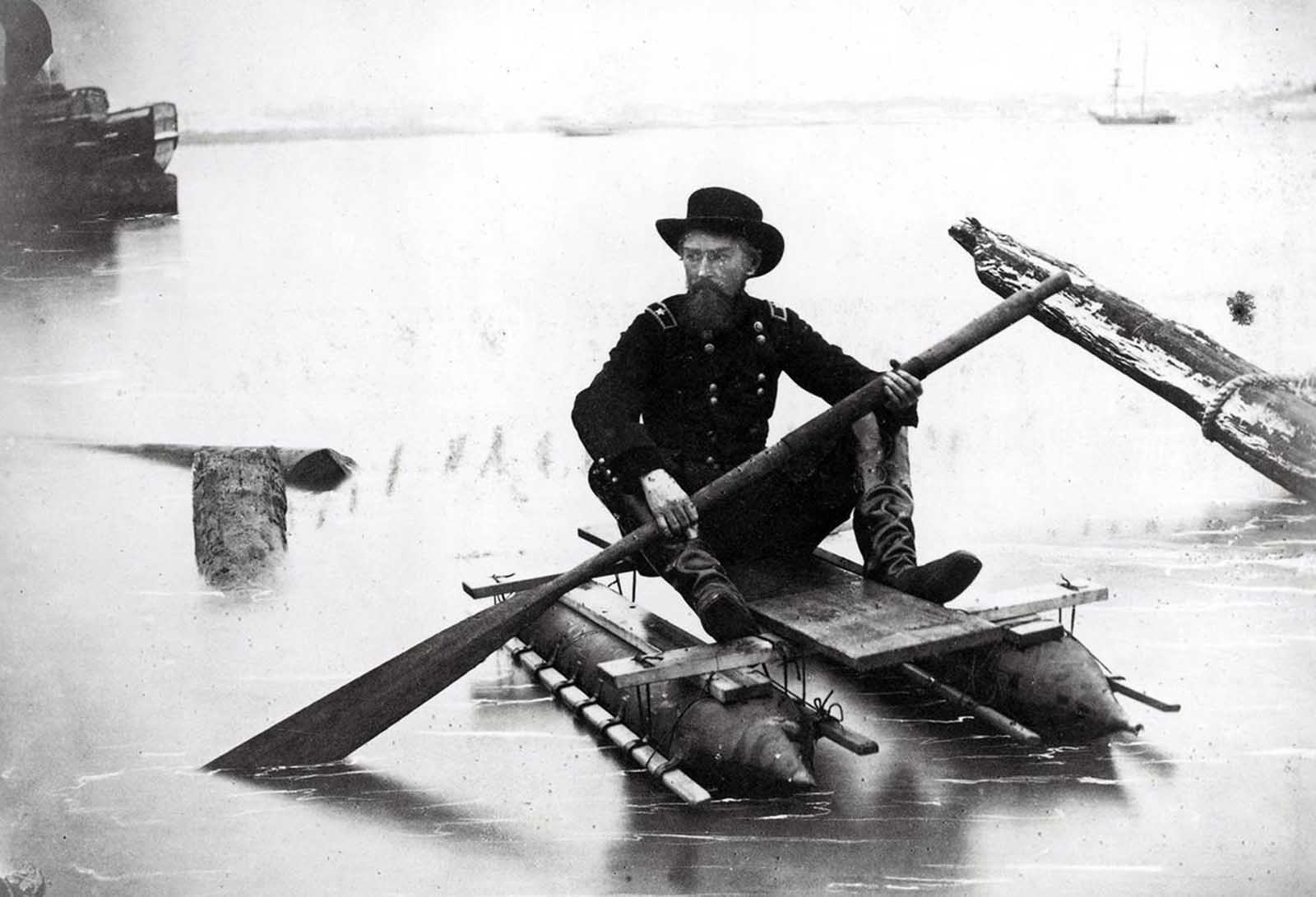
Union General Herman Haupt, a civil engineer, moves across the Potomac River in a one-man pontoon boat that he invented for scouting and bridge inspection in an image taken between 1860 and 1865. Haupt, an 1835 graduate of West Point, was chief of construction and transportation of U.S. military railroads during the war.
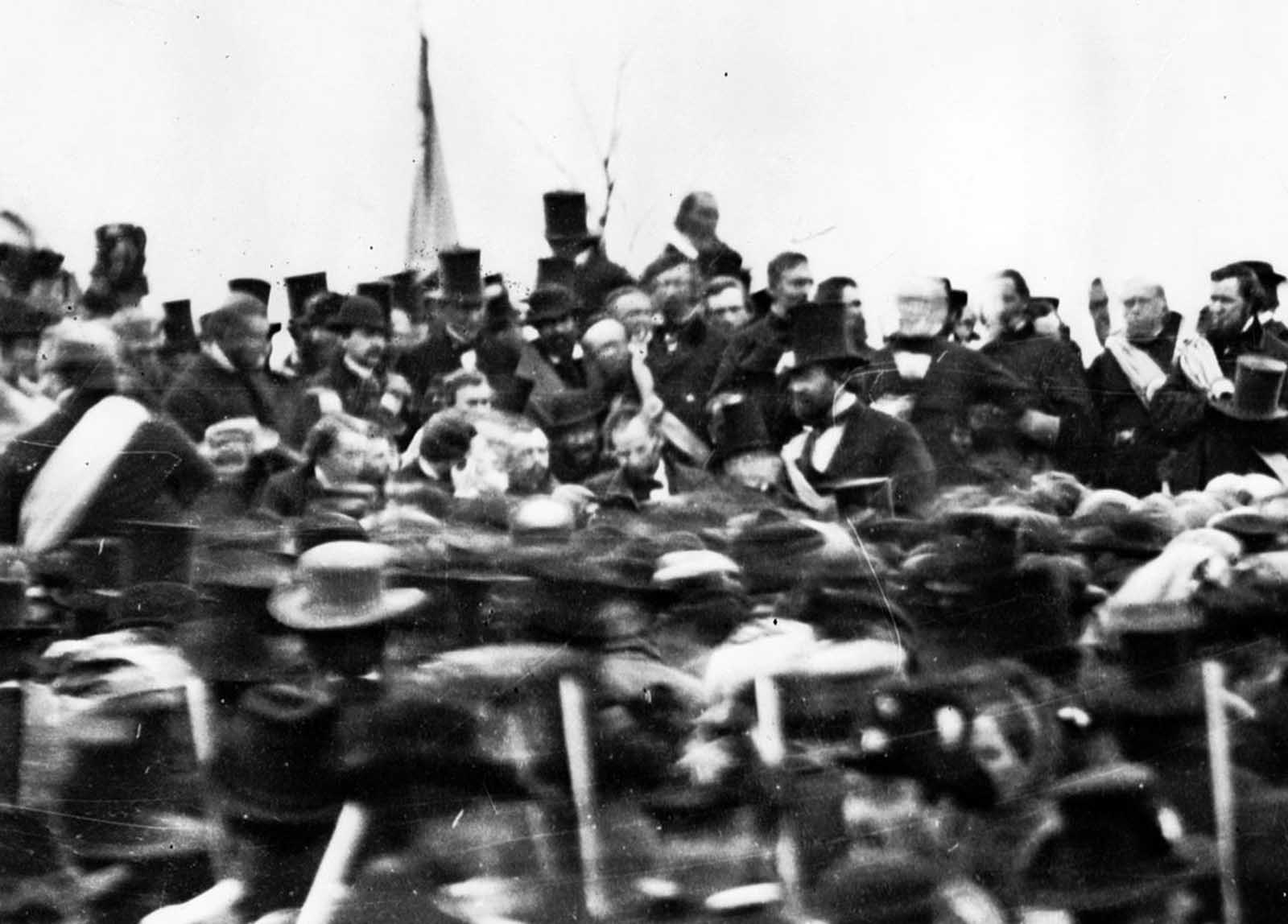
President Abraham Lincoln (center, hatless), surrounded by a crowd during his famous Gettysburg Address, in Gettysburg, Pennsylvania, on November 19, 1863. feldgrau.info
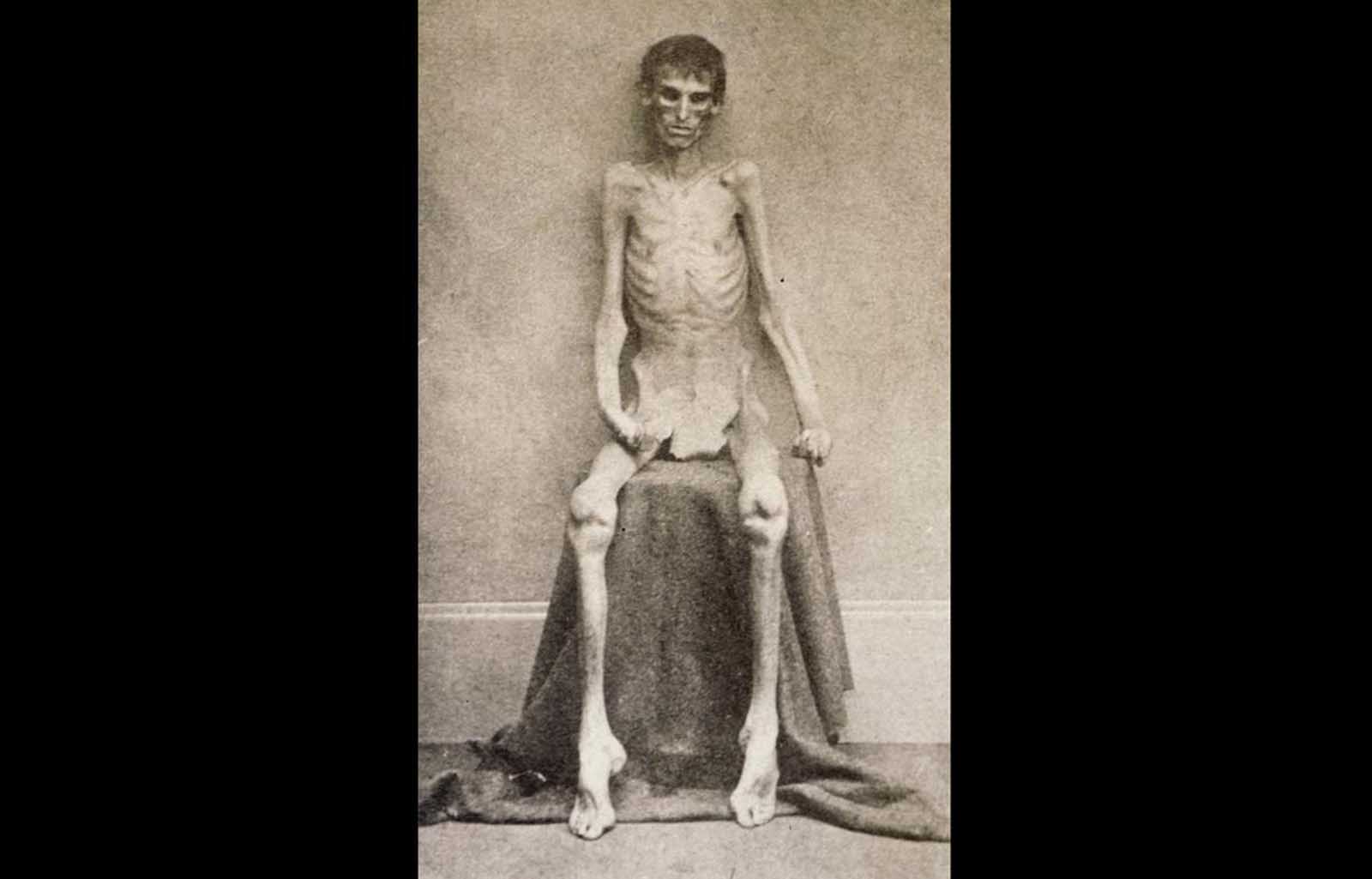
A nearly-starved Union soldier who survived imprisonment in the notorious Confederate prison in Andersonville, Georgia.

Confederate general Stonewall Jackson.

Portrait of Brigadier General Robert Huston Milroy, officer of the Union Army. Milroy most noted for his defeat at the Second Battle of Winchester in 1863. He later became Superintendent of Indian Affairs in the Washington Territory. Milroy died in Olympia, Washington in 1890, at the age of 73.
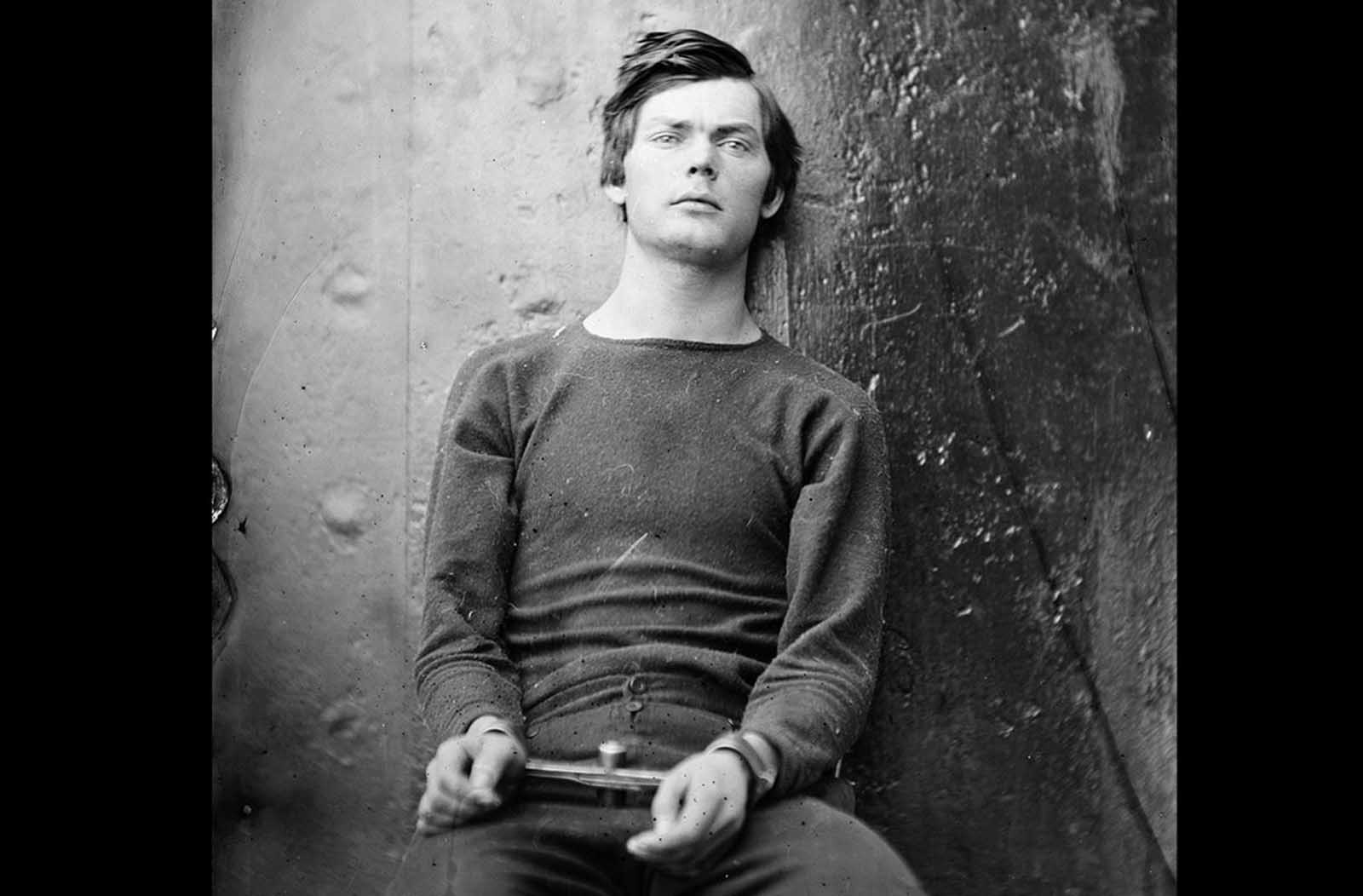
Conspirator Lewis Powell (Payne), in a sweater, seated and manacled in the Washington Navy Yard, Washington D.C. in April of 1865. Powell attempted unsuccessfully to assassinate United States Secretary of State William H. Seward in his home on April 14, 1865. he was soon caught, and became one of four people hanged for the Lincoln assassination conspiracy.
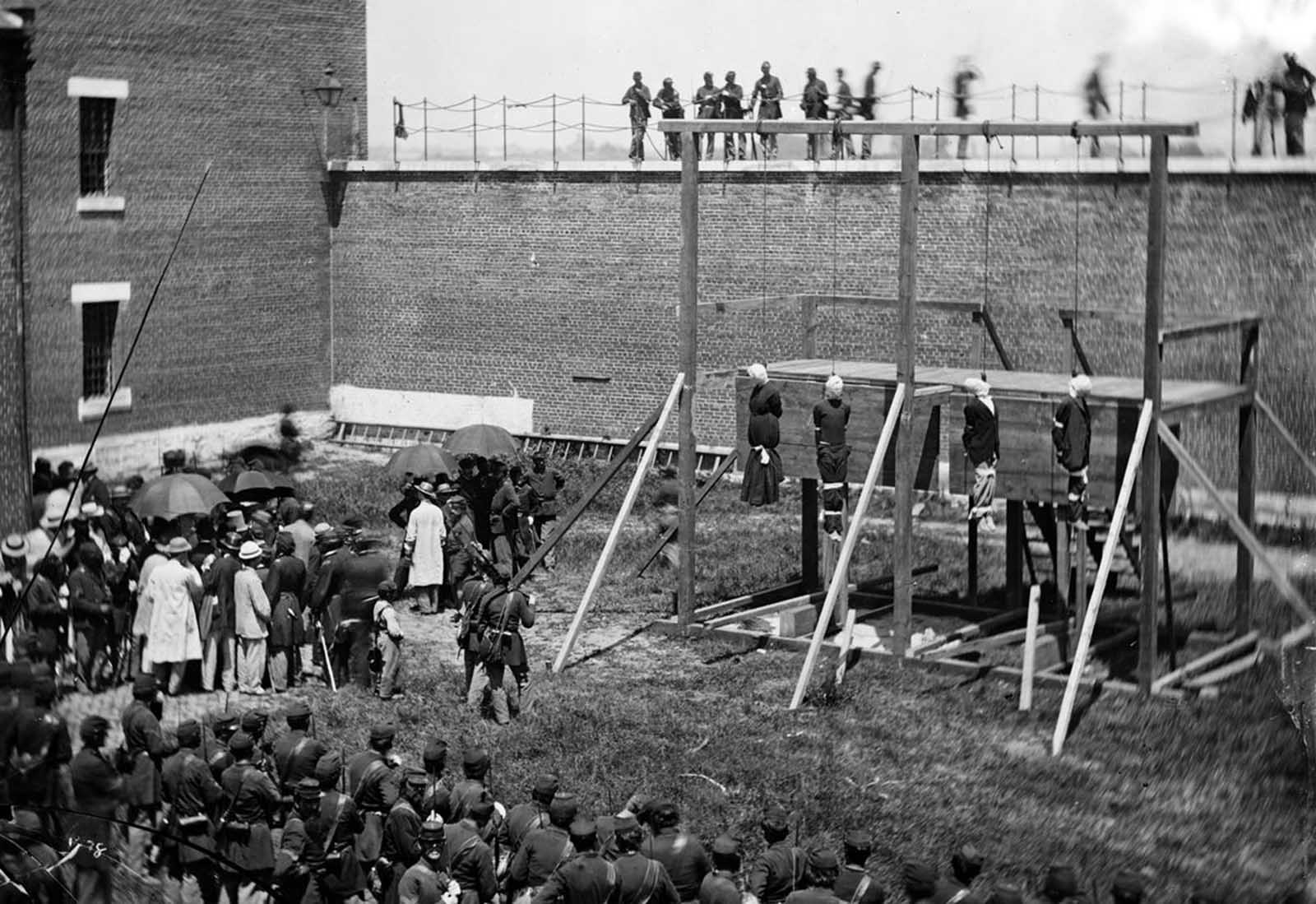
The hanging hooded bodies of the four conspirators, Mary Surratt, Lewis Powell (Payne), David Herold, and George Atzerodt, executed on July 7, 1865 at Fort McNair in Washington, District of Columbia, All four had been convicted of taking part in the conspiracy to assassinate Abraham Lincoln.

Soldiers of the VI Corps, Army of the Potomac, in trenches before storming Marye’s Heights at the Second Battle of Fredericksburg during the Chancellorsville campaign, Virginia, May 1863. This photograph (Library of Congress #B-157) is sometimes labeled as taken at the 1864 Siege of Petersburg, Virginia.

Maryland, Antietam, President Lincoln on the Battlefield Alexander Gardner, October 1862.

Union Major General Mortimer D. Leggett, photographed sometime between 1860 and 1865.
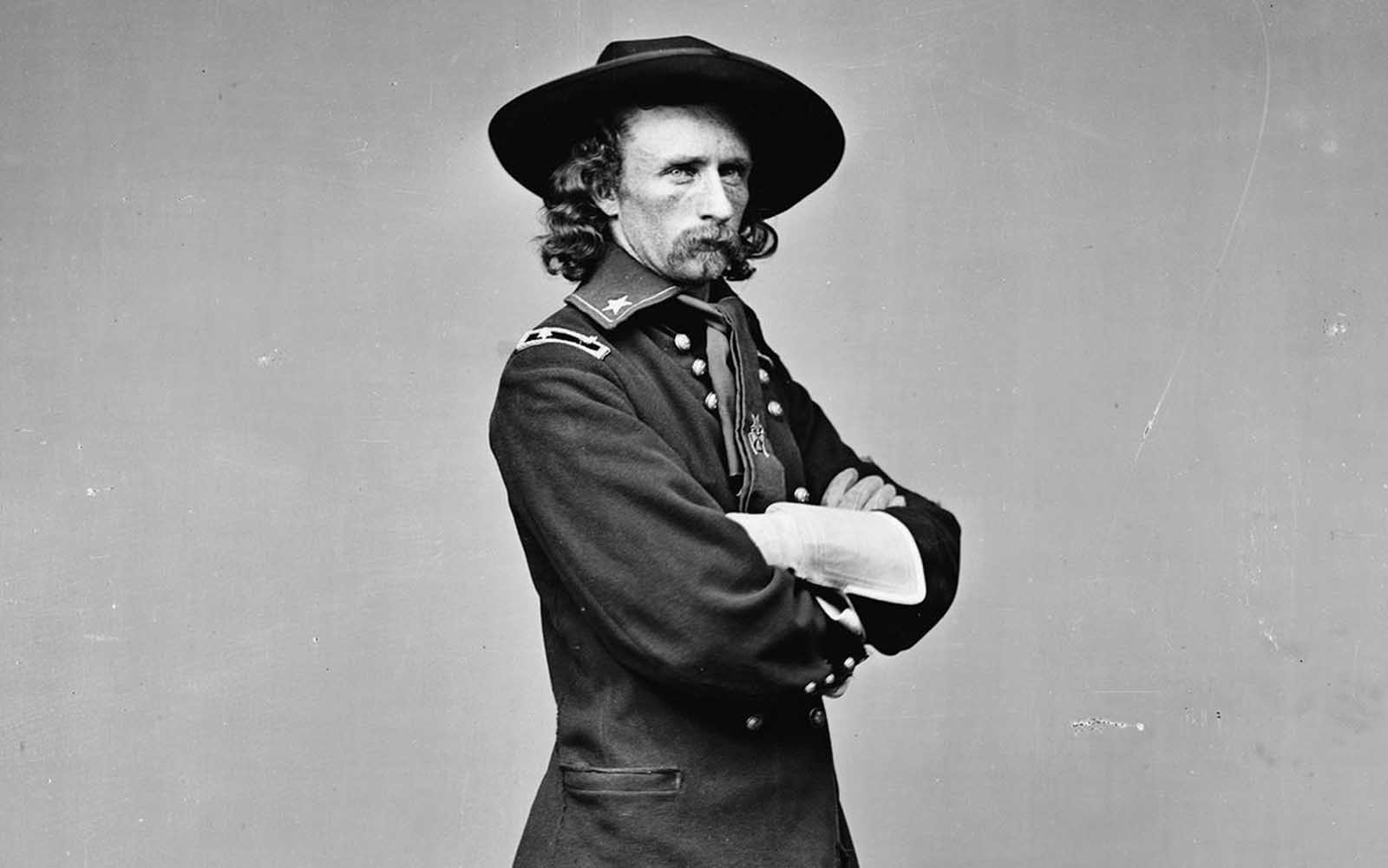
General George Armstrong Custer, a United States Army officer and cavalry commander in the American Civil War and the Indian Wars. Custer built a strong reputation during the Civil War, and afterwards he was sent west to fight in the Indian Wars. Custer was later defeated and killed at the famous Battle of the Little Bighorn in in eastern Montana Territory, in 1876.

Miss Walton, in a portrait taken by photographer Mathew Brady. feldgrau.info

Union General Isaac I. Stevens, seated on a porch in March of 1862, near Beaufort, South Carolina. Stevens, formerly the first governor of Washington Territory, was killed in action at the Battle of Chantilly on September 1, 1862 after picking up the fallen regimental colors of his old regiment, shouting “Highlanders, my Highlanders, follow your general!” Charging with his troops while carrying the banner of Saint Andrew’s Cross, Stevens was struck in the temple by a bullet and died instantly. feldgrau.info
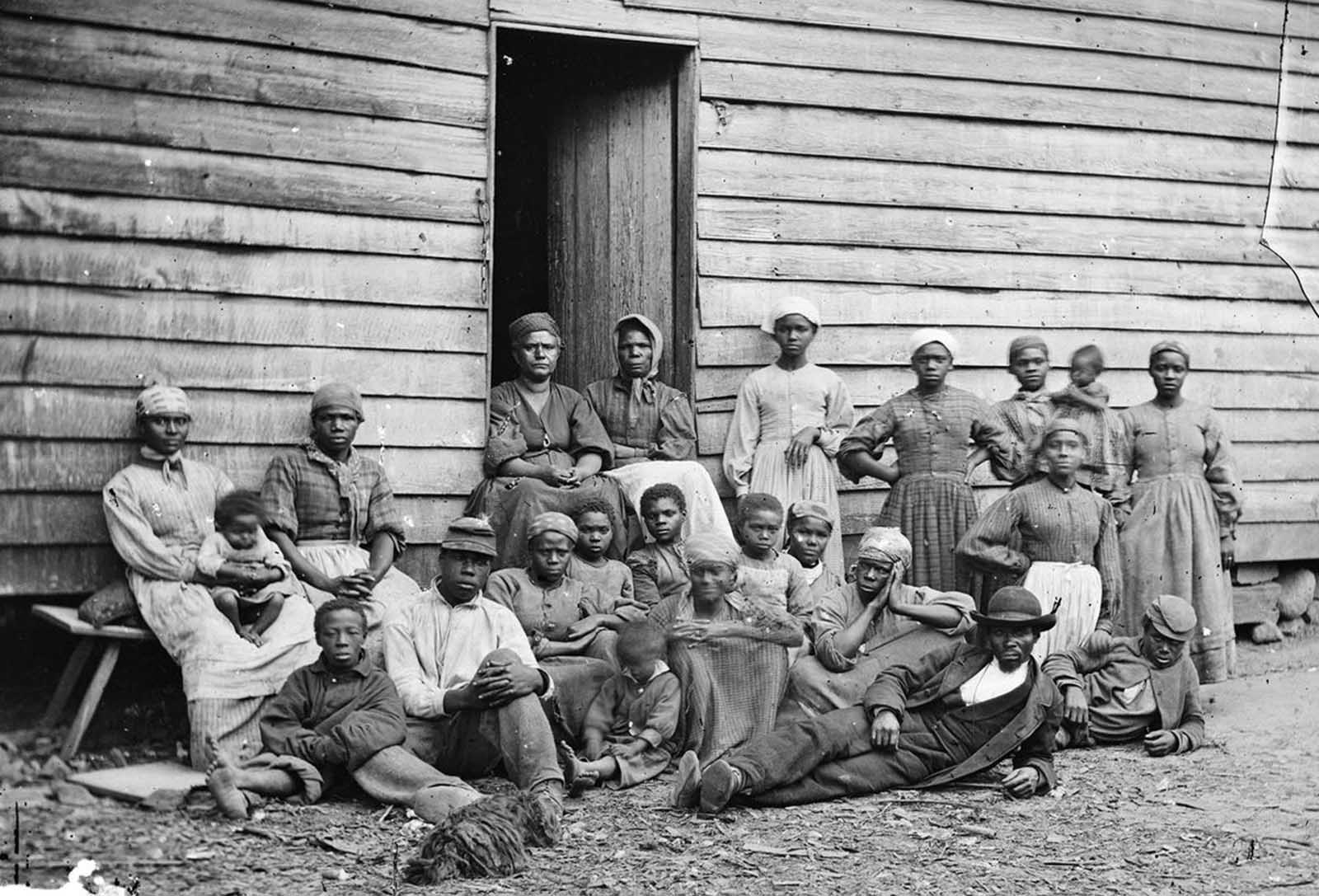
A group of “contrabands” (a term used to describe freed or escaped slaves) in front of a building in Cumberland Landing, Virginia, on May 14, 1862.

p.s.

A black Union soldier sits, posted in front of a slave auction house on Whitehall Street in Atlanta, Georgia, in 1864. The sign reads “Auction & Negro Sales”.




2024
Подробнее
Возврат
Подробнее
Возврат
Подробнее
БОИ ЗА БАСТОНЬ ГЛАЗАМИ НЕМЦЕВ
Подробнее
За что командир советской подлодки "Щ-408" получил орден Британской империи
Подробнее
За что командир советской подлодки "Щ-408" получил орден Британской империи
Подробнее
Германо-советский договор о дружбе и границе между СССР и Германией
Подробнее
Германо-советский договор о дружбе и границе между СССР и Германией
Подробнее
О пророчествах весны 1941-го.
Подробнее
Подборка
Подробнее